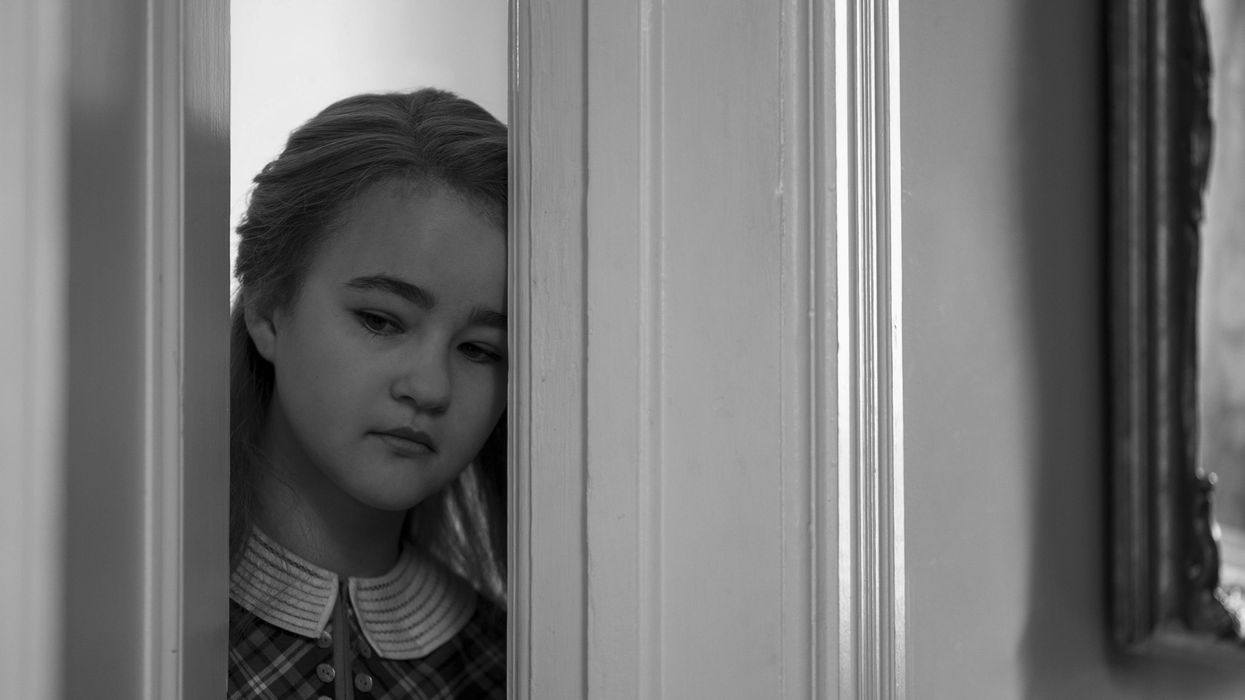'Wonderstruck': Todd Haynes' Cannes Film 'Draws Attention to Film Language in Every Way'
With 'Wonderstruck,' Todd Haynes trades the repressed world of Carol for an imaginative children's adventure story.

Just two years after he premiered Carol to an awestruck crowd, Todd Haynes is back at Cannes with Wonderstruck, a wholly different film for a different audience, but which manages to retain the essential Haynes DNA. Bathed in long silences, a reverence for the past, and, yes—bottomless wonder, Haynes' new film is a kids' movie. Unlike a film such as Inside Out, Wonderstruck won't play as well for adults due to intermittently twee and stilted moments (think Night at the Museum meets Midnight Special). But as a storybook of imagination and discovery, young audiences and adults with a soft spot for homages to classic cinema will devour the movie.
Although Brian Selznick (Hugo) adapted the script on spec from his own source material, costume designer Sandy Powell knew the film was right for Haynes, declaring, "This should be a Todd Haynes movie!" immediately after reading Wonderstruck.
"The script was pretty extraordinary," Haynes said at the film's press conference at Cannes 2017. "Clearly, Brian's love of and understanding for film permeated the script. It was an intensely cinematic idea on the page, juggling two time frames. It paid acute attention to the experience of music and sound. For a filmmaker, it was an irresistible piece of material." Haynes was also attracted to the material for the chance to try something new. "It was something I'd never done before, with the imagination of kids...and it was constructed like a true mystery," Haynes added.
"Nothing in the film was easy."
Wonderstruck moves between two parallel narratives: 1927, rendered in hopeful black and white, where a young deaf girl wanders New York City in search of a new life; and 1977, shot with an earthy color palette, where a young deaf boy searches the city for his absentee father. What do these stories have in common? Haynes bets on your engagement with the question, threading the mystery until the very last moments of the film.

It was also a bigger and more ambitious project than Haynes or his go-to producer Christine Vachon had previously taken on. "I always say, whatever you wanna do, Todd, we will," Vachon said. "But it had a lot of specific challenges. With two time periods, it was a certain level of production that was pretty new for both of us."
"Nothing in the film was easy," echoed Haynes, who recounted that although it was an "incredible honor and privilege" to shoot in the actual Museum of Natural History, it was also uniquely trying on the production schedule. "We had to load in and out every time we shot there," Haynes said. "We couldn’t leave lights overnight. We also had two kids, so we couldn't shoot for long hours. We shot a little bit of 1927 and 1977 every day in order to complete a full day."
"Amazon [Studios] is made of true cineastes who love movies."
Michelle Williams and Julianne Moore play supporting roles in the film, but the real stars of Wonderstruck are its kids: Millicent Simmonds, a deaf actress whom Haynes cast from a self-recorded audition tape; Oakes Fegley, a Jacob Tremblay look-alike (though admittedly less compelling); and Jaden Michael, who agreed to do the movie after he saw Carol. "I was like, 'Wow, that’s really cool,' Michael said. "I went on to IMDB and saw a photo of Todd and was like, 'Wow. He looks cool.'"
"I wanted to honor what young audiences can handle in a movie," Haynes said. "One thing we did while cutting the film showed it to kids at various stages of the cut…the kids guided us in the process."

For Moore, who has worked with Haynes since his daring 1995 film Safe, Wonderstruck was a no-brainer. "Todd sets [his movies] up cinematically, formally, and linguistically,” she said. "You don’t have to do anything in Todd’s movies. He’s done it all for you. All you have to do is enter the world."
Because this world is conveyed from the subjectivity of its deaf protagonists, Wonderstruck relies heavily on Ed Lachman's visuals, enhanced sound design, and a moving score from Carter Burwell. For the black-and-white narrative, Haynes took inspiration from the silent films of the 1920s, including F.W. Murnau's German Expressionist films and King Vidor’s The Crowd; for the '70s scenes, cinematographer Ed Lachman, another long-time Haynes creative partner, looked to Owen Roisman’s cinematography on The French Connection for guidance. Lachman shot Wonderstruck on negative color and in the wide aspect ratio he and Haynes haven't utilized since their work on I’m Not There.
In keeping with the tension at Cannes this year between streaming and theatrical practices, Haynes said he looked for a distributor that would honor the spirit of his film, which he described as "drawing attention to the language of film in almost every conceivable way." He found a partner in Amazon—which, he was quick to point out, is no Netflix.
"Amazon [Studios] is made of true cineastes who love movies," said Haynes. "They want to provide an opportunity for indie film visions to find footing and expressions in a vastly shifting market and culture around movie-viewing practices. This was always about seeing something on the big screen. Amazon is as committed to it as we are."














